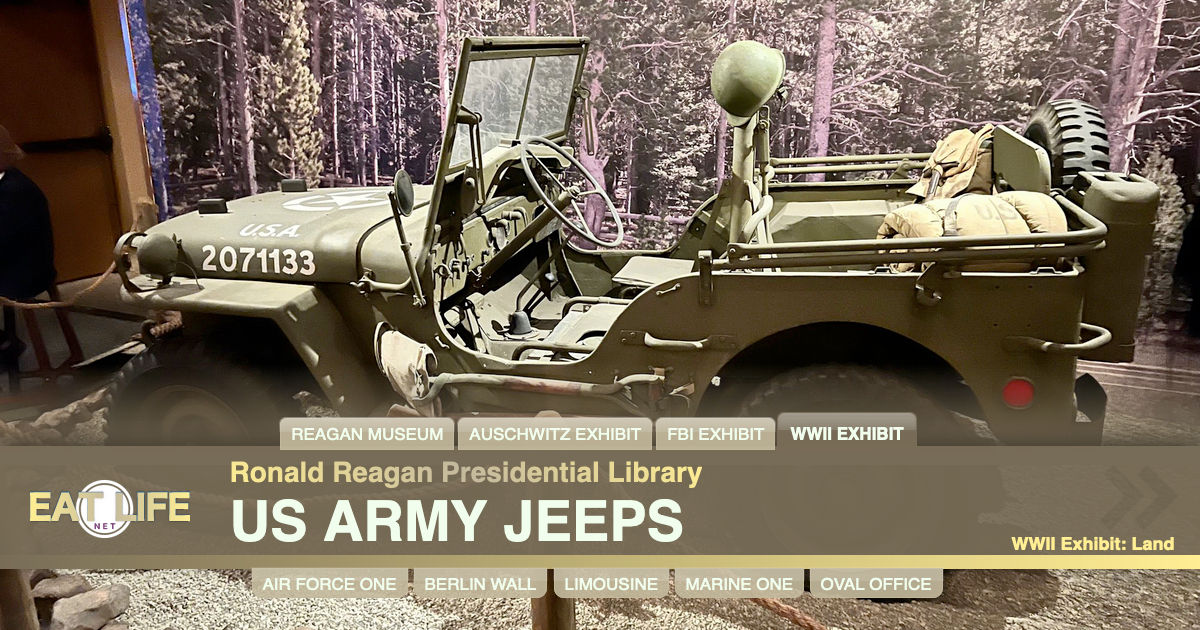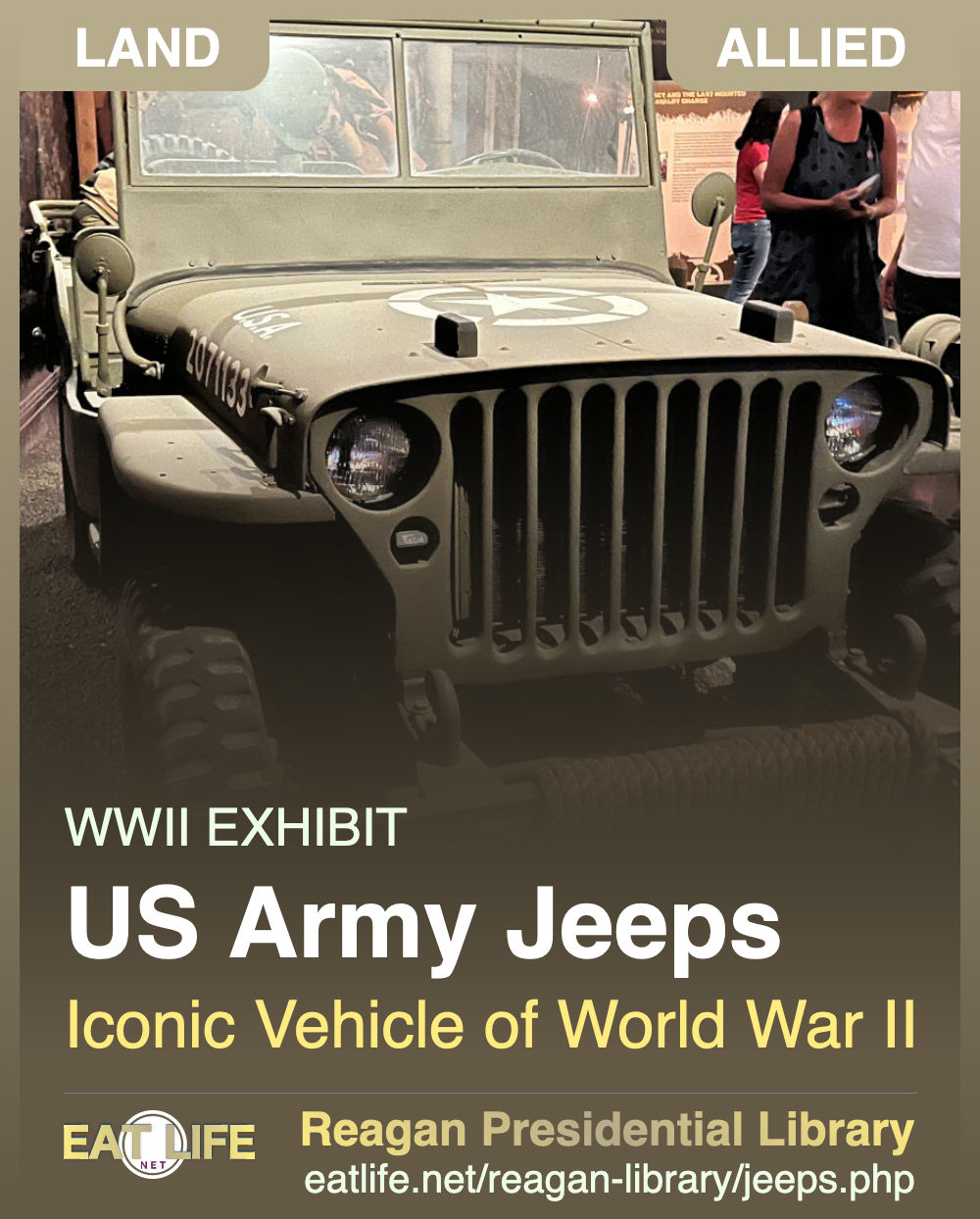At the start of WWII it was horses and mules in the various support roles but they were immediately replaced with 4x4 Jeeps and tanks. More than 600,000 Jeeps were produced during the war years.
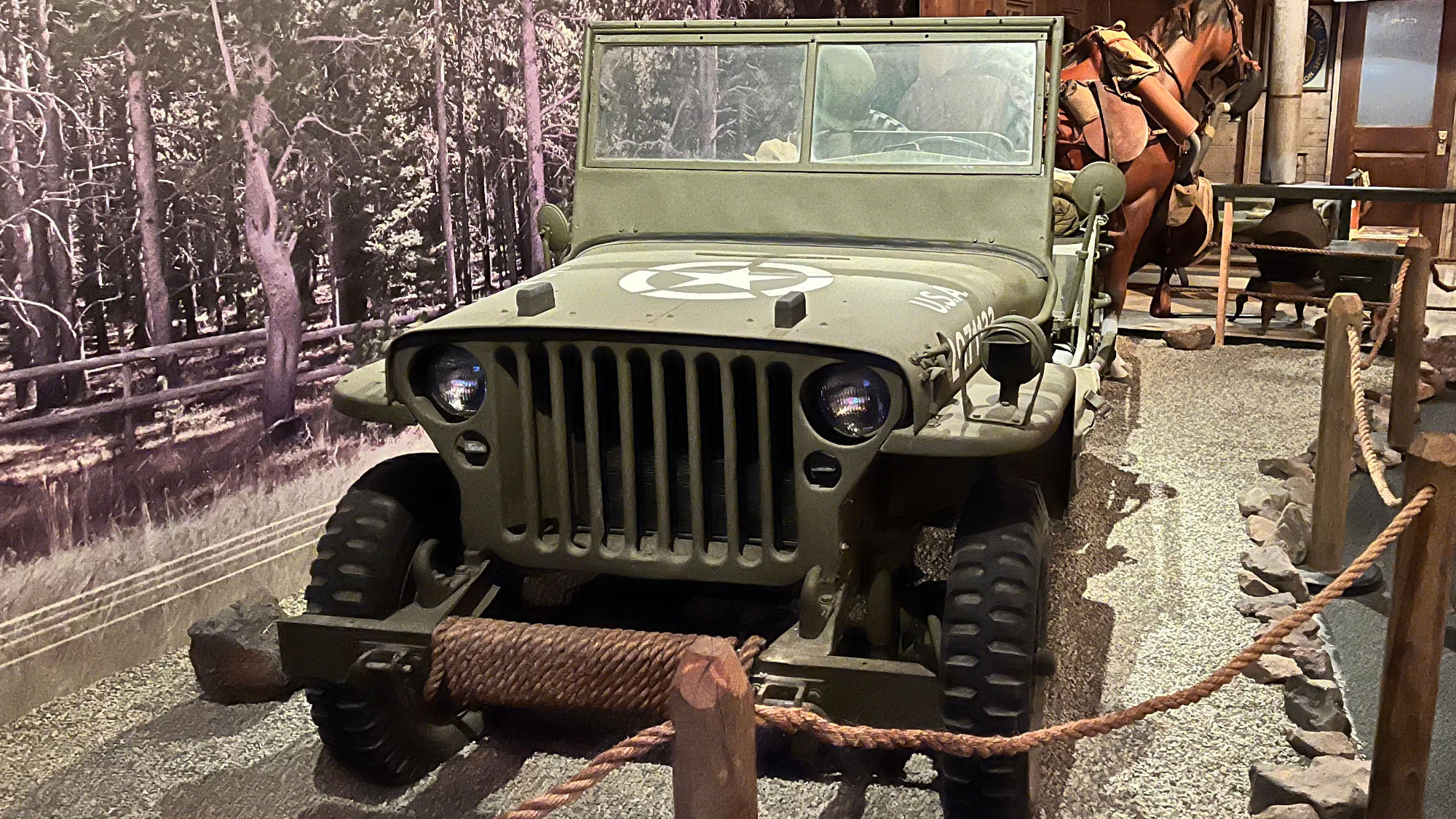
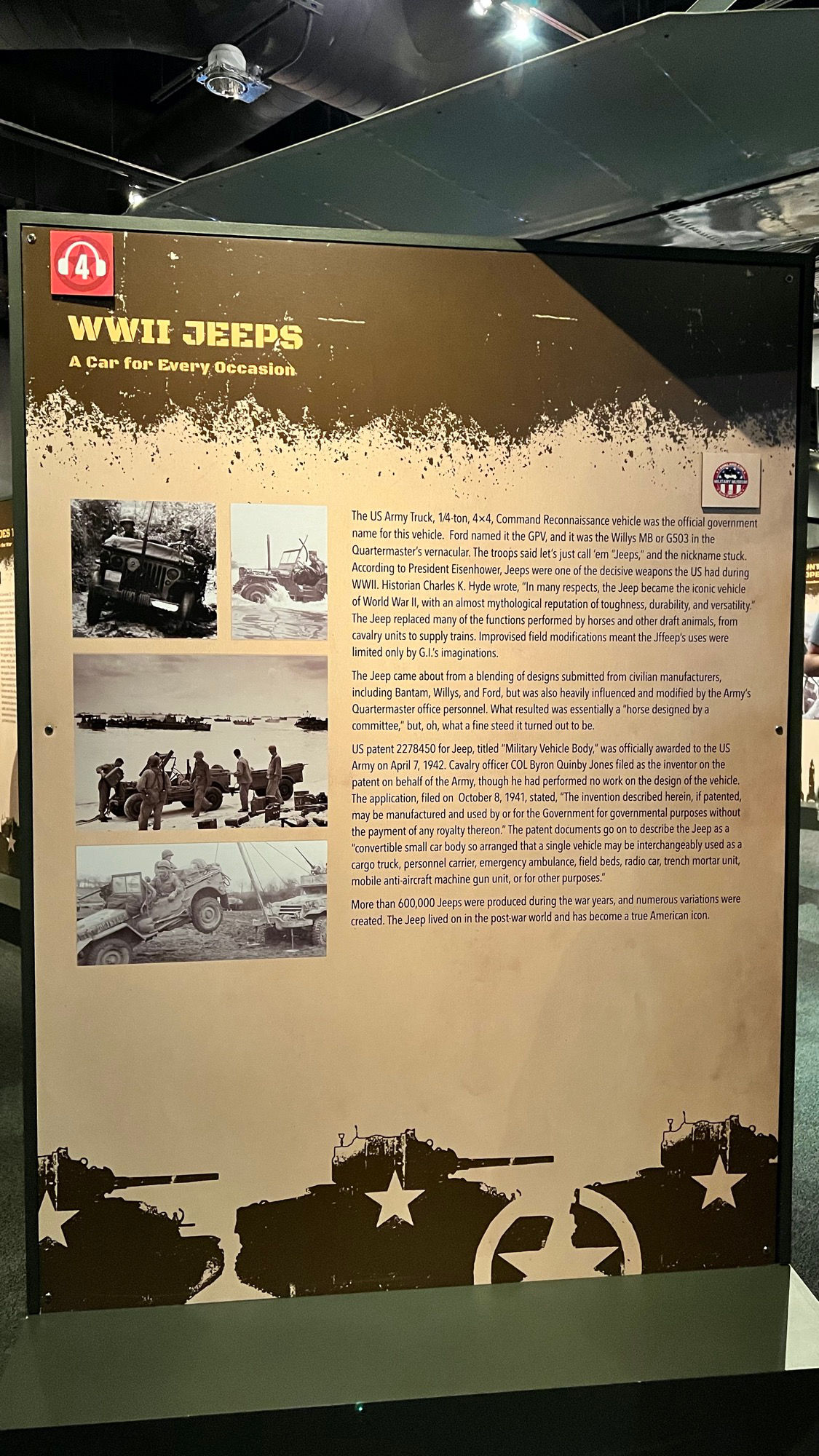
A Car for Every Occasion
The US Army Truck, 1/4-ton, 4×4, Command Reconnaissance vehicle was the official government name for this vehicle. Ford named it the GPV, and it was the Willys MB or G503 in the Quartermaster's vernacular. The troops said let's just call 'em "Jeeps," and the nickname stuck.
- According to President Eisenhower, Jeeps were one of the decisive weapons the US had during WWII.
- Historian Charles K. Hyde wrote, "In many respects, the Jeep became the iconic vehicle of World War II, with an almost mythological reputation of toughness, durability, and versatility."
- The Jeep replaced many of the functions performed by horses and other draft animals, from cavalry units to supply trains.
Improvised field modifications meant the Jeep's uses were limited only by G.I's imaginations.
The Jeep came about from a blending of designs submitted from civilian manufacturers, including Bantam, Willys, and Ford, but was also heavily influenced and modified by the Army's Quartermaster office personnel. What resulted was essentially a "horse designed by a committee," but, oh, what a fine steed it turned out to be.
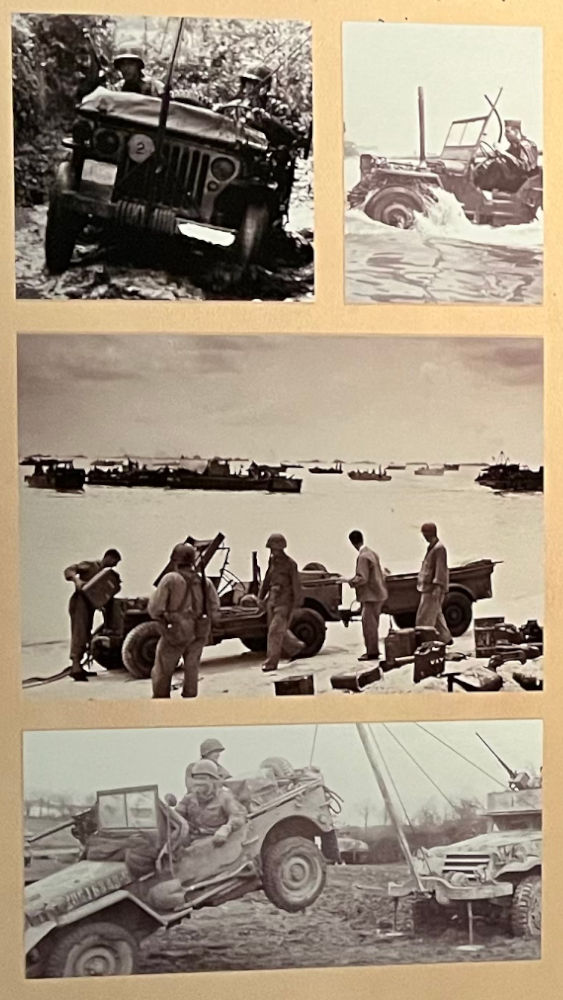 US patent 2278450 for Jeep, titled "Military Vehicle Body," was officially awarded to the US Army on April 7, 1942.
Cavalry officer COL Byron Quinby Jones filed as the inventor on the patent on behalf of the Army, though he had performed no work on the design of the vehicle.
The application, filed on October 8, 1941, stated, "The invention described herein, if patented, may be manufactured and used by or for the Government for governmental purposes without the payment of any royalty thereon."
The patent documents go on to describe the Jeep as a "convertible small car body so arranged that a single vehicle may be interchangeably used as a cargo truck, personnel carrier, emergency ambulance, field beds, radio car, trench mortar unit, mobile anti aircraft machine gun unit, or for other purposes."
US patent 2278450 for Jeep, titled "Military Vehicle Body," was officially awarded to the US Army on April 7, 1942.
Cavalry officer COL Byron Quinby Jones filed as the inventor on the patent on behalf of the Army, though he had performed no work on the design of the vehicle.
The application, filed on October 8, 1941, stated, "The invention described herein, if patented, may be manufactured and used by or for the Government for governmental purposes without the payment of any royalty thereon."
The patent documents go on to describe the Jeep as a "convertible small car body so arranged that a single vehicle may be interchangeably used as a cargo truck, personnel carrier, emergency ambulance, field beds, radio car, trench mortar unit, mobile anti aircraft machine gun unit, or for other purposes."
More than 600,000 Jeeps were produced during the war years, and numerous variations were created. The Jeep lived on in the post-war world and has become a true American icon.
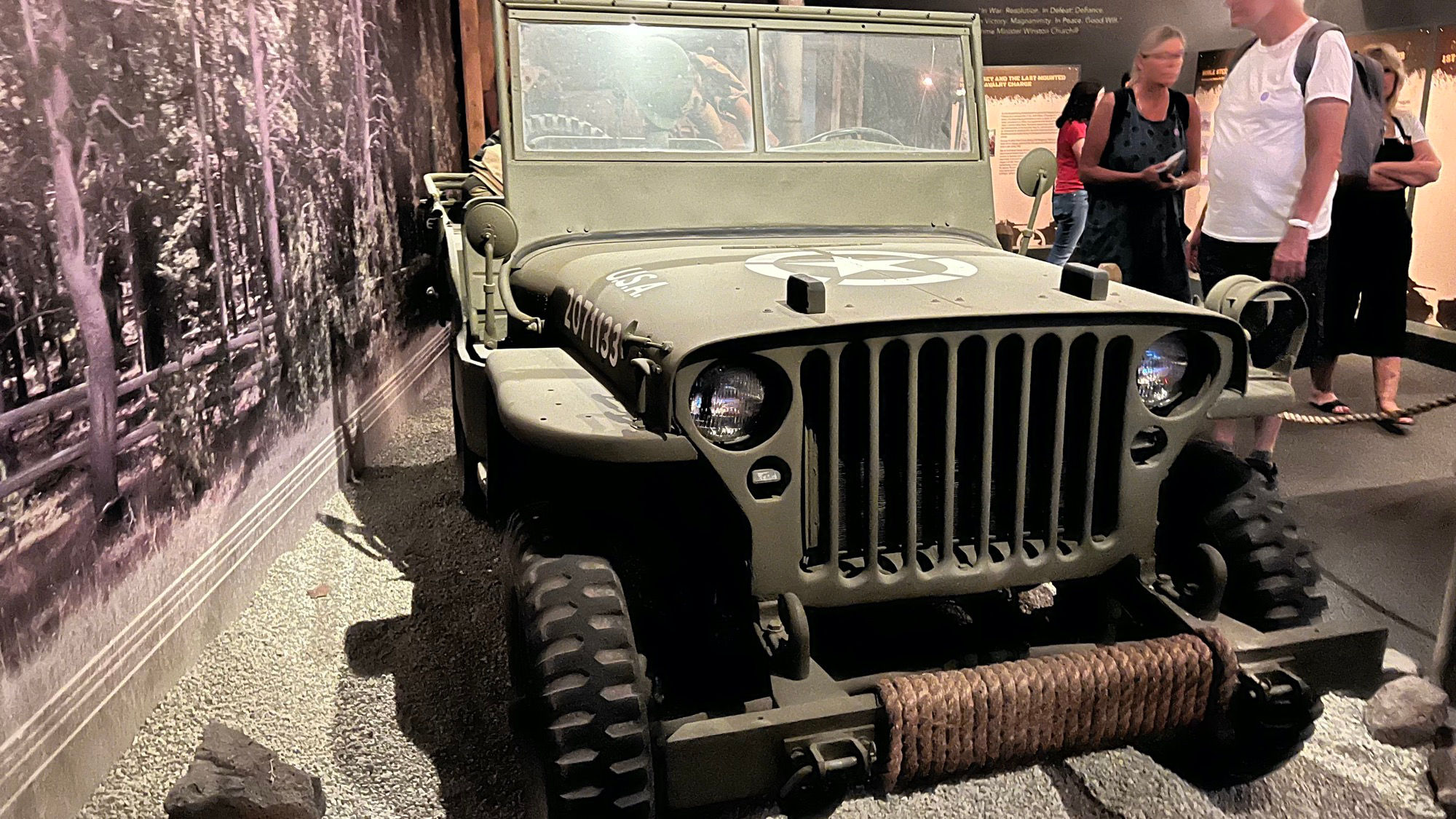
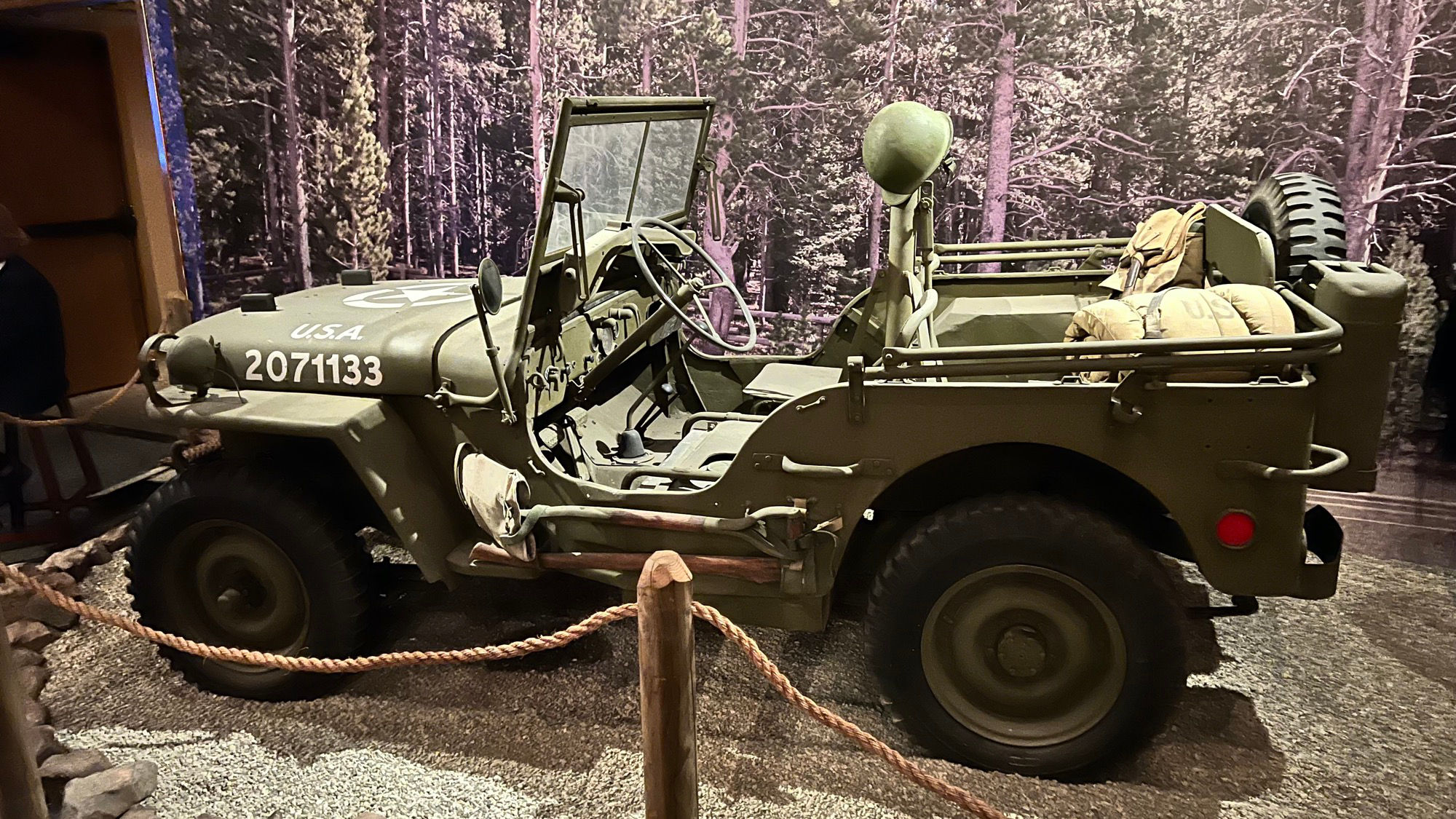
WIKIPEDIAThe Willys MB and the Ford GPW
Known as the Willys Jeep, or Jeep
Sometimes also referred to by its Standard Nomenclature List number G-503.They were highly successful American off-road capable, light military utility vehicles. Well over 600,000 were built to a single standardized design, for the United States and the Allied forces in World War II, from 1941 until 1945. This also made it (by its light weight) the world's first mass-produced four-wheel drive car, built in six-figure numbers.
Not only did it become the workhorse of the American military, literally replacing the use of horses and other draft animals (still heavily used in World War I), but also motorcycles (and sidecars) in every role, from messaging and cavalry units to supply trains – but improvised field modifications also made the jeep capable of just about any other function soldiers could think of. Moreover: military jeeps were adopted by countries all over the world, to this day – so much that they have become the most widely used and recognizable military vehicle in history.
The 1/4-ton jeep became the primary light, wheeled, multi-role vehicle of the United States military and its allies, with President Eisenhower once calling it "one of three decisive weapons the U.S. had during WWII." With some 640,000 units built, the 1/4‑ton jeeps constituted a quarter of the total military support motor vehicles that the U.S. produced during the war, and almost two-thirds of the 988,000 light 4WD vehicles produced, when counted together with the Dodge WC series. Large numbers of jeeps were provided to U.S. allies, including the Soviet Union at the time. Aside from large amounts of 1-1/2- and 2-1/2‑ton trucks, and 25,000 3/4‑ton Dodges – some 50,000 1/4‑ton jeeps were shipped to help Russia during WWII – against Nazi-Germany's total production of just over 50,000 Kubelwagens, the jeep's primary counterpart.
Dwight D. Eisenhower, the Supreme Commander of the Allied Expeditionary Force in Europe in World War II, wrote in his memoirs that most senior officers regarded it as one of the five pieces of equipment most vital to success in Africa and Europe. General George Marshall, Chief of Staff of the US Army during the war, called the vehicle "America's greatest contribution to modern warfare." In 1991, the MB Jeep was designated an "International Historic Mechanical Engineering Landmark" by the American Society of Mechanical Engineers.






